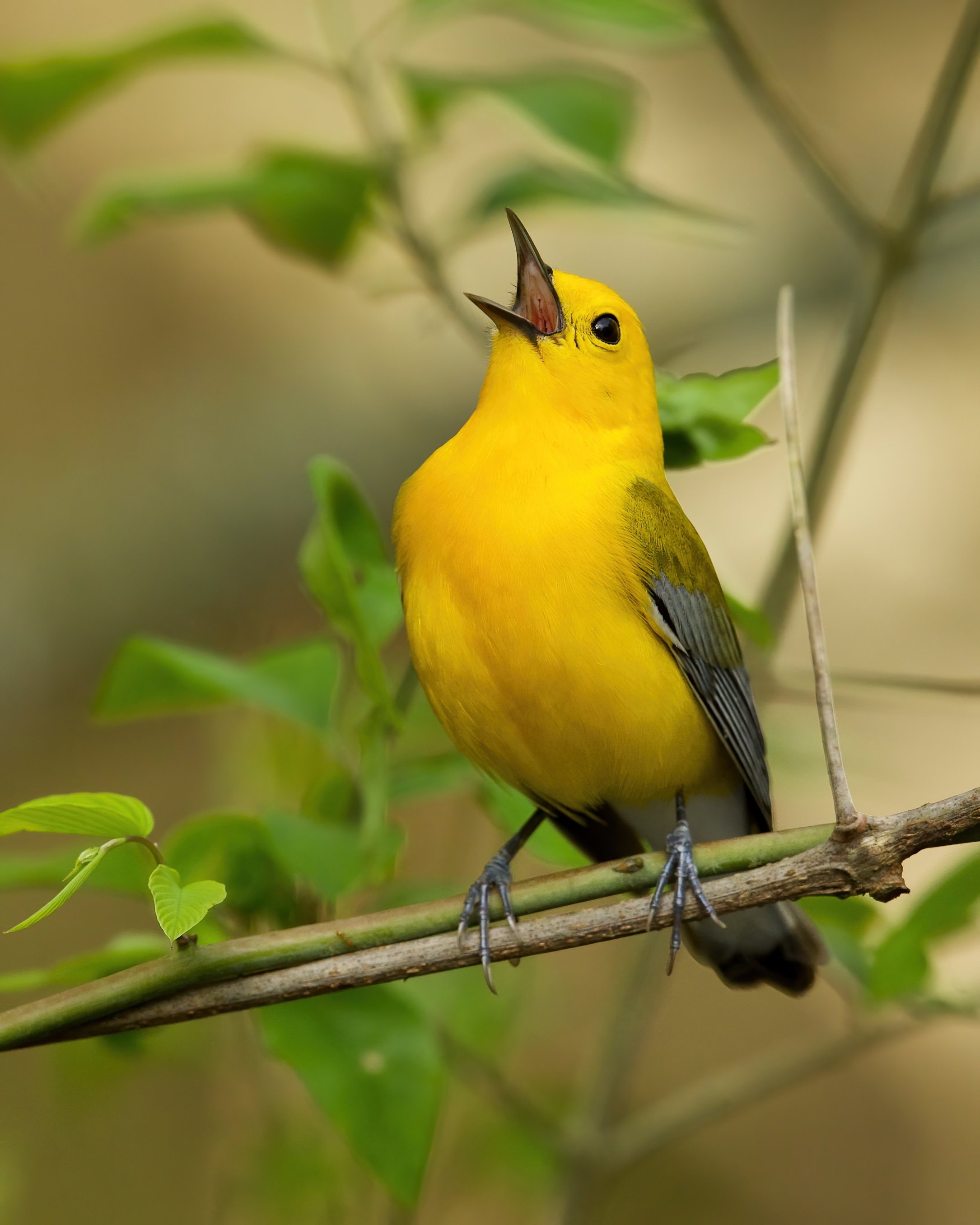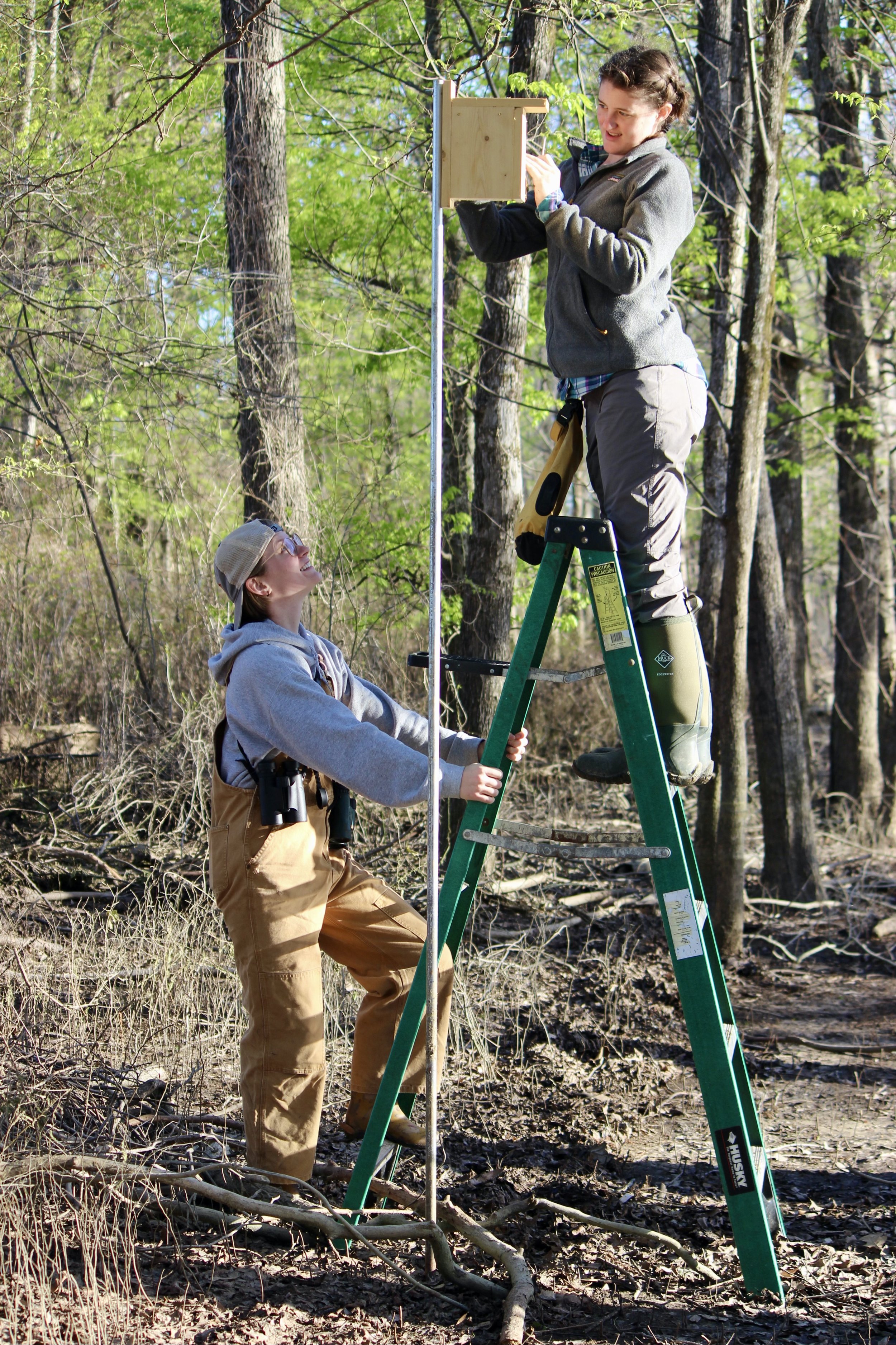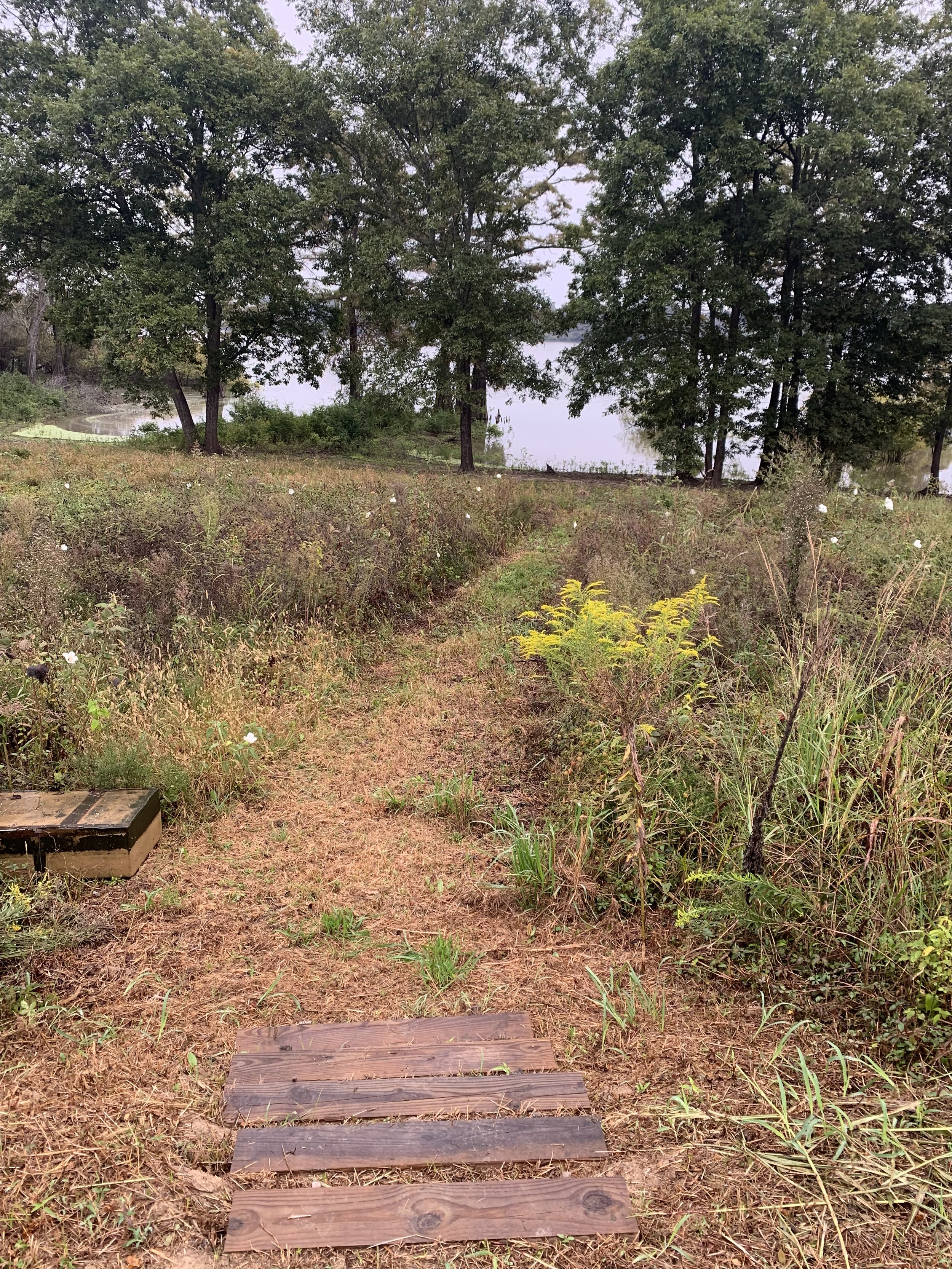Prothonotary Warbler nest box project: 2022 update
Prothonotary Warblers, also sometimes called Golden Swamp Warblers, are iconic birds of forested wetland habitats. They are migratory, spending their breeding season (roughly April-August) in bottomland hardwood forests, especially forested wetlands, of the southeastern United States. The rest of their year is spent in the mangrove forests of Central and South America. Photo by Larry Pace.
Prothonotaries are the only warbler species to nest in tree cavities, as pictured here (photo by Larry Pace), where a male is delivering food to nestlings inside a nest cavity. High-quality nesting holes can be difficult to find, however, so nesting success of Prothonotaries may be improved by provision of appropriately sized nest boxes, similar to Eastern Bluebirds (see here for plans to build a box for a Prothonotary Warbler). Prothonotary Warbler populations are in decline due to habitat loss, and we can help them by protecting existing forested wetlands, and also by providing nest boxes.
Those are both part of our mission at the DWB Sky Lake Nature Reserve in Humphreys County, MS. In October of 2020, with the help of several members of the Jackson Audubon Society, we installed 20 nest boxes for Prothonotary Warblers at the Reserve, when the water level at Sky Lake was quite low. Ten of the boxes were set close to the lake edge, and 10 were set further away. In addition, we equipped half the boxes with predator guards (5-gallon buckets) on their poles. Our hope was that in 2021, we could test whether Prothonotaries preferred locations closer to or further from the lake, and whether nesting success was improved by use of the predator guards.
Meanwhile, we were thrilled to recruit talented high school student Norah Bruce as an intern with DWB, to undertake monitoring the nest boxes in 2021. We planned to have her check each box every 2-3 weeks during nesting season.
So in April, 2021, we headed to Sky Lake, anxious to see if the Prothonotary Warblers had yet returned from their wintering grounds, and if they had begun using any of our boxes. First surprise: Wow, did we underestimate the range of fluctuation in water levels at Sky Lake! On April 3, we found that water levels were upwards of 15 feet higher than when the boxes had been installed, and all but 8 of our 20 boxes had been either torn from their poles by rising and swirling water, or pulled from the ground altogether! No Prothonotaries were detected.
On April 11, the water had kept rising, and only 4 of our boxes were above water (and just barely)…but TWO of them had Prothonotary nests under construction!
With the help of DWB volunteers, especially Meredith Wulff (pictured with Norah here) and University of Mississippi graduate student Emma Counce, Norah continued to monitor the 8 boxes that were available to birds most of the summer. This field work was challenging, typically involving some combination of kayaks, canoes, and ladders, along with lots of water and mud.
Ultimately, Norah’s data showed that Prothonotaries nested successfully at least 4 times in our boxes in 2021, producing approximately 13 young. In one instance, it appeared an active nest had been destroyed by a predator, suggesting that predator guards may be important for improving success. And we certainly learned that the boxes should be placed further upslope from the lake edge, to avoid being flooded in spring.
In 2022, with continued help from Emma (pictured here with Norah) and Meredith, Norah is continuing to monitor warbler boxes at the Reserve. This time, we installed 10 boxes (further from the water!), all of which were above water in April.
However, on the first box check of 2022, we had a new surprise. Carolina Chickadee nests were occupying 4 of the 10 boxes! It was April 10, and male Prothonotaries had just arrived to begin defining and defending their territories, and searching for good nest sites. Meanwhile the chickadees, which are permanent residents in Mississippi, had gotten a head start and had already laid eggs!
Fast forward to May 15, and things were going better for the Prothonotaries: Norah and team observed four active Prothonotary nests, including one box with 6 nestlings!
This female Prothonotary did not leave her nest when our team opened it to check progress. That was a first for us!
Norah will be busy this summer, including an aquatic biology research fellowship and a trip to Arizona for Camp Chiricahua (44 years after I attended it myself!). But we will continue to monitor the Prothonotaries when possible.
Meanwhile, we’d love for you to visit the DWB Sky Lake Nature Reserve any time, and make your own observations of Prothonotary Warblers or whatever else you can find. You can park at the north end of the reserve, walk down the entrance steps (pictured here), turn right (south), and walk about 100 yards down a mowed path into the forest. From there, you should be able to amble through the woods, following our string of nest boxes and observing them from a respectful distance. Watch for the “Golden Swamp Warblers” and listen for their “sweet sweet sweet sweet” song. Click HERE for more information about the Reserve, including directions. Click HERE for more about Prothonotary Warblers, including recordings of their vocalizations. Let us know (dwindbirds@gmail.com) what you find out there, or if you have any questions.














